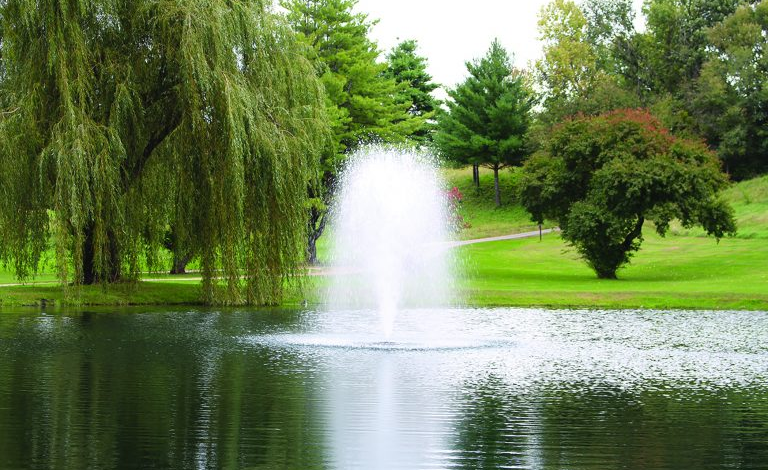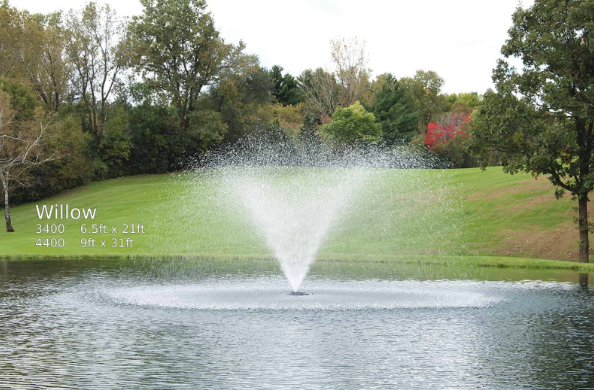How Kasco Fountains Contribute to Better Water Quality and Ecosystem Health

Pond owners often struggle with murky water, unpleasant smells, and declining fish health. These issues stem from poor water circulation and inadequate oxygen levels in their ponds. A properly functioning fountain system addresses these problems by creating constant water movement that revitalizes the entire aquatic environment and supports thriving ecosystems.
Kasco fountains deliver powerful aeration through their spray patterns, which break the water surface and introduce oxygen deep into the pond. This continuous circulation prevents the stagnant conditions that allow harmful bacteria and algae to dominate. The mechanical action of water being drawn up and dispersed creates an ongoing exchange between surface and deeper layers, ensuring balanced conditions throughout.
See also: How Home Temples Enhance Mental Peace, Positivity & Daily Life Rhythm
The Critical Role of Aeration in Controlling Algae Growth
Oxygen Infusion Through Surface Agitation: When fountain nozzles propel water into the air, each droplet absorbs atmospheric oxygen before returning to the pond. This process multiplies the water’s dissolved oxygen content far beyond what natural diffusion achieves. Higher oxygen levels create an environment where beneficial aerobic bacteria outcompete algae for nutrients, naturally suppressing excessive algae blooms that turn water green.
Disrupting Algae Reproduction Cycles: Algae thrives in still, warm water where sunlight penetrates undisturbed and nutrients concentrate in specific zones. Fountain circulation breaks up these ideal breeding conditions by keeping water temperatures more uniform and preventing thermal stratification. The constant movement makes it difficult for algae spores to settle and establish colonies, reducing the need for chemical treatments that can harm fish.
Supporting Beneficial Bacterial Communities: Aerobic bacteria require oxygen to break down organic waste like fish excrement, dead plant material, and fallen leaves. Without adequate aeration, anaerobic bacteria take over and produce toxic byproducts including hydrogen sulfide and methane. Fountains maintain the oxygen levels necessary for beneficial bacteria to process waste efficiently, keeping the biological filtration system functioning properly.

How Water Circulation Improves Nutrient Distribution
Preventing Nutrient Stratification: Ponds naturally develop layers where warmer, oxygen-rich water sits on top while colder, nutrient-dense water sinks to the bottom. This stratification creates dead zones where nothing can survive. Fountain systems mix these layers continuously, distributing nutrients evenly so aquatic plants can access what they need regardless of their depth, promoting healthier growth throughout the pond.
Breaking Up Sediment Accumulation: Organic material constantly settles to the pond floor, forming a muck layer that releases nutrients slowly over time. This nutrient release can trigger algae blooms when conditions are right. Strategic fountain placement keeps sediment suspended in the water column where bacteria can break it down more effectively, reducing the buildup that contributes to long-term water quality decline.

Eliminating Odors and Stagnant Water Zones
Addressing Hydrogen Sulfide Production: That rotten egg smell coming from your pond indicates anaerobic decomposition occurring in oxygen-depleted areas. These conditions allow sulfur-reducing bacteria to produce hydrogen sulfide gas, which is toxic to fish even in small concentrations. Fountain aeration eliminates these pockets by ensuring oxygen reaches every corner of the pond, allowing only odor-free aerobic breakdown processes.
Targeting Problem Areas Around Edges: Shallow zones near shorelines and around docks often become stagnant first because they receive less natural circulation from wind. These areas accumulate debris and develop thick algae mats that spread outward. Placing fountains to direct flow toward these trouble spots prevents the stagnation that allows problems to develop, keeping the entire pond fresh and inviting.
Reducing Mosquito Breeding Habitat: Stagnant water provides perfect breeding grounds for mosquitoes, which lay eggs in calm surface areas. The constant water movement from fountain operation disrupts the still conditions mosquitoes need, making your pond less attractive to these pests. This benefit extends beyond comfort, as it reduces the risk of mosquito-borne diseases around your property.
Benefits to Fish, Plants, and Overall Aquatic Life
Fish Health and Stress Reduction: Fish depend on dissolved oxygen for respiration, and low oxygen levels cause stress that weakens their immune systems and makes them susceptible to disease. Adequate aeration from fountains keeps oxygen at levels where fish remain active, feed properly, and resist common infections. You’ll notice fish become more visible and energetic when oxygen levels improve throughout the water column.
Supporting Submerged Plant Growth: Aquatic plants need carbon dioxide during daylight hours for photosynthesis, but they also require oxygen at night when photosynthesis stops. Fountain circulation ensures plants receive adequate oxygen during dark periods while also distributing the carbon dioxide produced by decomposition. This balance allows beneficial plants to thrive while outcompeting nuisance species that prefer stagnant conditions.
Creating Habitat Diversity: The water movement patterns created by fountains establish zones with different current speeds and oxygen levels. This diversity allows various species to find their preferred conditions within the same pond. Some fish prefer calmer areas while others seek moving water, and fountain systems accommodate both preferences by creating varied microhabitats that support greater biodiversity.
Improving Beneficial Insect Populations: Dragonflies, damselflies, and other beneficial insects require healthy water conditions for their aquatic larvae stages. These predatory insects help control mosquitoes and other pests naturally. When fountain aeration maintains water quality, these beneficial species establish stable populations that provide ongoing pest control without chemical intervention.
Real-World Transformations Through Strategic Fountain Use
Residential Pond Recovery: A homeowner in suburban Texas faced a half-acre pond covered in thick algae each summer despite regular chemical treatments. Installing a fountain system with adequate horsepower for the pond volume cleared the water within three weeks. The continuous aeration supported bacterial populations that consumed excess nutrients, and the algae disappeared without additional chemicals, saving hundreds in annual treatment costs.
Community Park Water Feature Success: A neighborhood retention pond serving as a decorative centerpiece developed severe odor problems that prompted resident complaints. The property management company added fountain aeration as a last resort before considering expensive dredging. Within a month, odors vanished and fish that had been gasping at the surface began thriving again, demonstrating how quickly proper aeration reverses declining conditions.
Golf Course Water Hazard Improvement: A course maintenance team struggled with algae-choked water hazards that looked unappealing to players and required constant maintenance. They installed fountains in each hazard and noticed dramatic improvements in water clarity and reduced maintenance needs. The aesthetic improvement enhanced the course’s appearance while the reduced chemical use lowered operating costs, proving that fountain systems deliver both visual and practical benefits.
Conclusion
Fountain systems transform troubled ponds into thriving aquatic ecosystems by addressing the root causes of water quality problems rather than just treating symptoms. The combination of aeration, circulation, and continuous water movement creates conditions where beneficial organisms flourish while harmful algae and bacteria struggle to survive. If your pond shows signs of declining health, consider how a properly sized fountain system could restore balance and vitality to your water feature.

